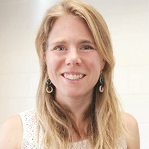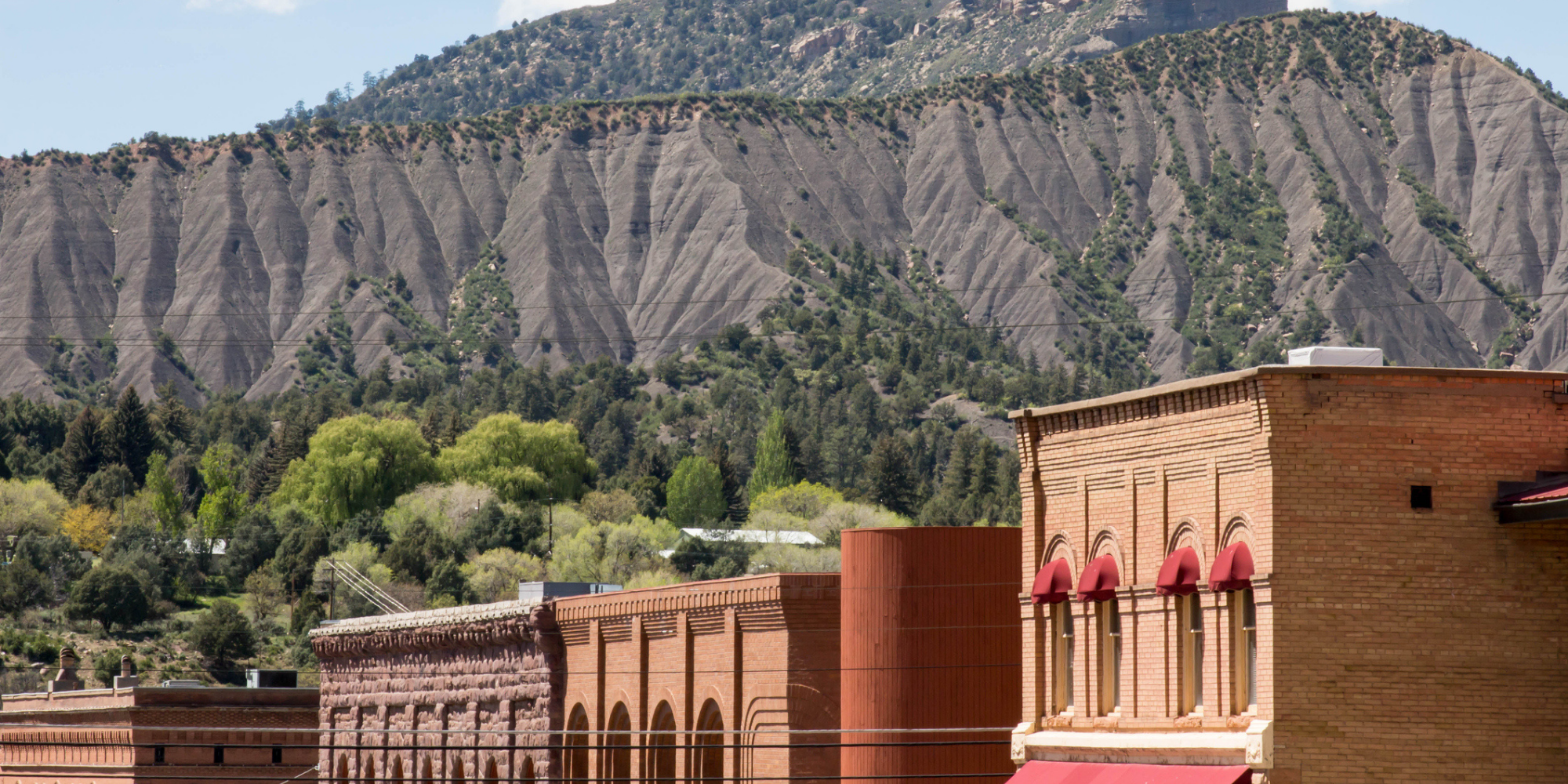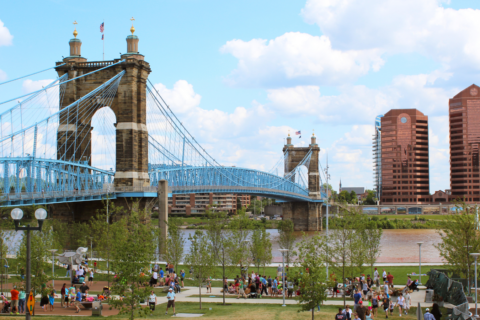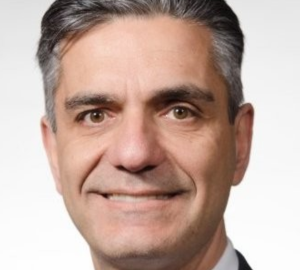Q&A with Imogen Ainsworth, Sustainability Coordinator, Durango
In 2018, the City of Durango, CO was looking for ways to reduce its greenhouse gas emissions and step up sustainability. To get there, the city needed to understand which sectors of its industry and economy were contributing to its carbon footprint most. Through the National League of Cities, the City of Durango was awarded a Leadership in Community Resilience grant, and Durango’s sustainability coordinator Imogen Ainsworth connected with Thriving Earth Exchange – a program within the American Geophysical Union – to conduct a greenhouse gas inventory.
Thriving Earth Exchange connects communities with technical experts and project managers who help them explore priorities related to natural resources, climate change, natural hazards and more. In the case of Durango, Thriving Earth Exchange connected Ainsworth with two volunteer scientists, who worked with the city to study a past inventory and gather and analyze current data for the County of La Plata, which Durango is located in. Together, they created the 2016 City of Durango Community Greenhouse Gas Inventory, which was released in 2019.
Ainsworth spoke with Thriving Earth Exchange’s Haley McKey to talk about Durango’s climate commitment, her experience with Thriving Earth Exchange and the impact of Durango’s greenhouse gas inventory on the city’s sustainability journey.
Haley McKey: At the time of the project, Durango City Council identified climate impacts and sustainability among its top priorities. Why is having an up-to-date greenhouse gas inventory so important to addressing climate change?
Imogen Ainsworth: Developing a greenhouse gas emissions inventory gave the city clarity for emissions reduction goals and catalyzed local climate action. The inventory provided a high-level snapshot of the primary emissions sources in Durango and helped make the case for targeted projects and partnerships. It also served as a strong communications tool, providing the community with context for our emissions reduction goals.
McKey: How did partnering with Thriving Earth Exchange help your team succeed?
Ainsworth: As a one-person division in a smaller community, being able to partner with local scientists helped to spread the workload, keep the project on track and lend legitimacy to the results.
The main thing that was really helpful was having some company in doing this – it wasn’t just me sitting in my office trying to decide the best way to measure things. I had [the scientists] to bounce ideas off of, and they provided a sense check for what we were reporting. The project management support Thriving Earth provided helped us stay on track and kept the project from slipping down the to-do list.
McKey: Was there anything you learned from the greenhouse gas inventory that you didn’t expect? What were the major takeaways?
Ainsworth: Compared to some communities, we have high commercial energy per capita emissions, partly because Durango has a tourist economy and we have a lot of visitors. So commercial contributions might be higher than if you were just looking at the population.
La Plata County (which includes Durango and surrounding communities) conducted an inventory back in 2008 for 2005 emissions. Though they aren’t directly comparable, we did use some of the information from the La Plata inventory to try to get a picture of how Durango’s emissions have changed over time. We basically took out the oil and gas, land use and mining emissions that came from the surrounding region, not the city. We could see that the per capita emissions for Durango in 2016 were lower than the per capita emissions for the county in 2005 even when you removed those contributions.
McKey: What was the impact of the greenhouse gas inventory in the community? Has the City of Durango implemented climate and sustainability policies based on the data?
Ainsworth: During the inventory project, Durango City Council adopted municipal and community-wide greenhouse gas emissions reduction goals. The inventory was undoubtedly a catalyst for adoption of these goals. The goals, in turn, led to the creation of partnerships and projects designed to reduce emissions. For example, our local electrical cooperative, La Plata Electric Association, adopted a carbon emissions goal, and the inventory helped us collaborate and say, “Okay, here are our shared goals – how can we work together to reach them?” We worked with the utility to develop a joint Electric Vehicle Readiness plan that is now moving into implementation. The city will look to update the community emissions inventory in the next two years.
McKey: Do you plan to begin any other community-led sustainability initiatives in the future?
Ainsworth: We have several initiatives currently underway and in development. For example, we are looking at the energy and building codes for new commercial and residential construction that would require higher standards for energy efficiency. We are also working closely with our local utility to develop initiatives that contribute to our shared goals, such as co-branding outreach on beneficial electrification, and ways to encourage improved efficiency for existing commercial and residential buildings through education and incentives.
Finally, solid waste: it’s a relatively small portion of our community emissions, but arguably underrepresented because the inventory only accounts for the emissions that come from waste disposal – not the creation and transportation of materials consumed. Durango has an award-winning single-stream recycling program, but we know that over 20% of our trash is food waste. So one thing we’re planning is a public-private partnership with a local composting company to scale up solid waste diversion through increased composting.
What advice or guidance would you give to other communities who want to lead community science projects like this one?
Leverage community partnerships to maximize impact! Particularly for a small department or division – like mine – that wants to increase its impact, find those people in the community that have the expertise and energy to support projects or are already working on the kinds of things the city is thinking about doing.
Getting input from community groups and partnering with organizations that are already doing the work, whether it’s on sustainability or anything else, is key. That way, you can augment each other’s work instead of duplicating or unintentionally undermining it. It’s all about finding creative ways of working together to amplify action in the community.
About Thriving Earth Exchange: The American Geophysical Union’s Thriving Earth Exchange connects communities with scientists and supports them as they work together to tackle local challenges related to natural hazards, natural resources and climate change. Since its inception in 2013, Thriving Earth has worked with nearly 200 communities in 39 states and 10 countries. Thriving Earth works with a variety of partners – including scientific organizations, academia, federal institutions and community-facing organizations – and also supports organizations outside of the United States seeking to adapt Thriving Earth’s approach to community science for their region or country.
Learn More
Want to learn more about Thriving Earth Exchange or start a community science project? Apply to join an upcoming project cohort.

About the Author:
Imogen Ainsworth is Sustainability Coordinator for the City of Durango, Colorado.









